

The Madison is a novelty dance that was popular in the late 1950s to mid-1960s.


The Madison is a novelty dance that was popular in the late 1950s to mid-1960s.
It was created and first danced in Columbus, Ohio, in 1957. [1] The local popularity of the dance and record in Baltimore, Maryland, came to the attention of the producers of The Buddy Deane Show in 1960, which led to other dance shows picking it up. [2]
The Madison is a line dance that features a regular back-and-forth pattern interspersed with called steps. Its popularity inspired dance teams and competitions, as well as various recordings, and today it is still sometimes performed as a nostalgic dance. The Madison is featured in the John Waters movie Hairspray (1988), and it continues to be performed in the Broadway musical Hairspray . Both the film and the musical feature one of many songs released during the Madison "craze" in the US.
The jazz pianist Ray Bryant recorded "Madison Time" for Columbia Records in 1959. [3] Billboard stated that "The footwork for the Madison dance is carefully and clearly diagrammed for the terpers." [4] The Ray Bryant version was the version featured in the film Hairspray. The other popular version was by Al Brown & The Tunetoppers. Another version was recorded by radio presenter Alan Freeman for Decca Records in 1962.
An example of an album featuring music for the Madison is The Madison Dance Party (1960) by Al Brown's Tunetoppers with calls by Al Brown. It includes a song titled "The Madison" as well as several other songs to which the Madison can be danced, including "Madison Party", "Mo' Madison", "Madison Jr.", and "Madison Jam", among others. [5] [6]
The Madison basic, danced in the film Hairspray, is as follows:
Called steps included the Double Cross, the Cleveland Box, The Basketball (with Wilt Chamberlain), the Big "M", the "T" Time, the Jackie Gleason, the Birdland, and The Rifleman. "The Jackie Gleason" is based on a tap dance movement known as "Shuffle Off to Buffalo". [7] Additional called sequences are: Two Up and Two Back, Big Boss Cross in Front, Make a "T", the Box, Cuddle Me, and Flying High. "Away We Go" may be the same as "The Jackie Gleason". [8]
Time magazine noted the Madison in April 1960. [9]
The Madison dance has become very popular in the Kingdom of Cambodia and Kampuchea Krom (Mekong delta). It was introduced to Cambodia in the 1960s and remains a very popular dance at wedding banquets and other parties.[ citation needed ] The largest Madison dance in the world took place in Siem Reap, Cambodia on 15 April 2015 in celebration of the Cambodian New Year, involving 2,015 participants. [10]
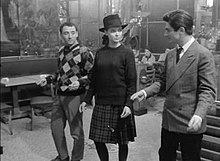
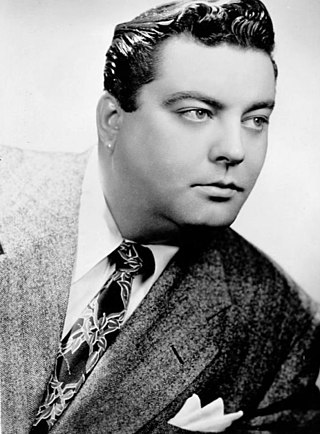
John Herbert Gleason was an American actor, comedian, writer, and composer known affectionately as "The Great One". He developed a style and characters from growing up in Brooklyn, New York and was known for his brash visual and verbal comedy, exemplified by his city bus driver character Ralph Kramden in the television series The Honeymooners. He also developed The Jackie Gleason Show, which maintained high ratings from the mid-1950s through 1970. The series originated in New York City, but filming moved to Miami Beach, Florida in 1964 after Gleason took up permanent residence there.
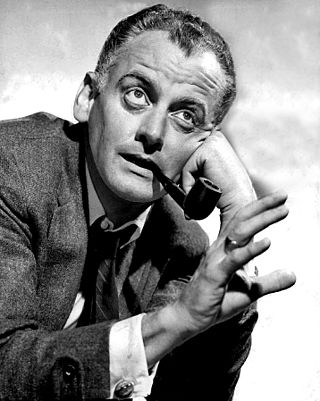
Arthur William Matthew Carney was an American actor and comedian. A recipient of an Academy Award, a Golden Globe Award, and six Primetime Emmy Awards, he was best known for his role as Ed Norton on the sitcom The Honeymooners (1955–1956).
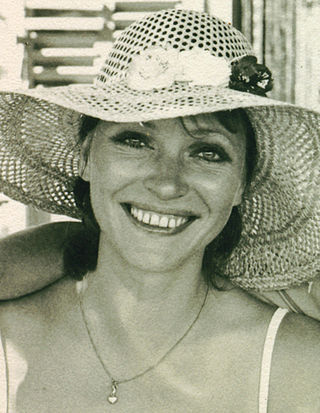
Anna Karina was a Danish-French film actress, director, writer, model, and singer. She was French New Wave director Jean-Luc Godard's collaborator in the 1960s, performing in several of his films, including The Little Soldier, A Woman Is a Woman, My Life to Live, Bande à part, Pierrot le Fou, and Alphaville. For her performance in A Woman Is a Woman, Karina won the Silver Bear Award for Best Actress at the Berlin Film Festival.

The Honeymooners is an American television sitcom which originally aired from 1955 to 1956, created by and starring Jackie Gleason, and based on a recurring comedy sketch of the same name that had been part of Gleason's variety show. It follows the lives of New York City bus driver Ralph Kramden (Gleason), his wife Alice, Ralph's best friend Ed Norton and Ed's wife Trixie as they get involved with various schemes in their day-to-day living.
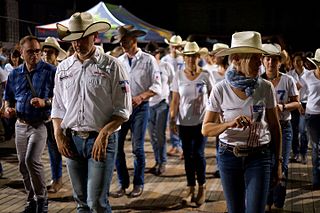
A line dance is a choreographed dance in which a group of people dance along to a repeating sequence of steps while arranged in one or more lines or rows. These lines usually face all in the same direction, or less commonly face each other. Unlike circle dancing, line dancers are not in physical contact with each other. Each dance is usually associated with, and named for, a specific song, such as the Macarena or the Electric Slide are a few of the line dances that have consistently remained part of modern American culture for years.

Hairspray is an American musical with music by Marc Shaiman and lyrics by Marc Shaiman and Scott Wittman, with a book by Mark O'Donnell and Thomas Meehan, based on John Waters's 1988 film of the same name. The songs include 1960s-style dance music and "downtown" rhythm and blues. Set in 1962 Baltimore, Maryland, the production follows teenage Tracy Turnblad's dream to dance on The Corny Collins Show, a local TV dance program based on the real-life Buddy Deane Show. When Tracy wins a role on the show, she becomes a celebrity overnight, leading to social change as Tracy campaigns for the show's integration.

Lawrence Brown was a jazz trombonist from California best remembered for his work with the Duke Ellington orchestra. He was a session musician throughout his career, and also recorded albums under his own name.
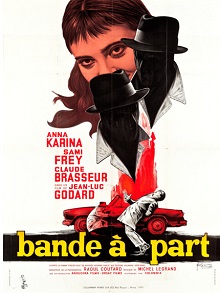
Bande à part is a 1964 French New Wave film directed by Jean-Luc Godard. It was released as Band of Outsiders in North America; its French title derives from the phrase faire bande à part, which means "to do something apart from the group". The film is about three people who commit a robbery. It received positive critical reviews, and its dance scene has been referenced several times in popular culture.
A Coaster Step is a term used in swing dancing which originated in Lindy swing. During the last two beats of a rhythm pattern, the follower rotated 90° to be perpendicular to the leader, then stepped back, together, and forward in triple-rhythm, then rotated back to face the leader and to be ready to step forward as the leader led the follower in to begin the next pattern.
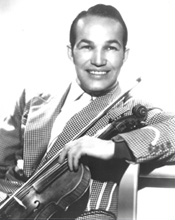
Donnell Clyde "Spade" Cooley was an American convicted murderer and former Western swing musician, big band leader, actor, and television personality. In 1961 he was arrested and convicted for the April 1961 murder of his second wife, Ella Mae Evans.

African-American musical theater includes late 19th and early 20th century musical theater productions by African Americans in New York City and Chicago. Actors from troupes such as the Lafayette Players also crossed over into film. The Pekin Theatre in Chicago was a popular and influential venue.

Sue Ane Langdon is an American actress. She has appeared in dozens of television series and had featured roles in films such as A Guide for the Married Man and The Cheyenne Social Club, both directed by Gene Kelly, as well as The Rounders opposite Henry Fonda and Glenn Ford and two Elvis Presley movies, Roustabout and Frankie and Johnny.
"Charmaine" is a popular song written by Ernö Rapée and Lew Pollack. The song was written in 1926 and published in 1927. However, Desmond Carrington on his BBC Radio 2 programme marked the song's writing as being in 1913.
Hairspray is a 2007 musical romantic comedy film based on the 2002 Broadway musical of the same name, which in turn was based on John Waters's 1988 comedy film of the same name. Produced by Ingenious Media and Zadan/Meron Productions, and adapted from both Waters's 1988 script and Thomas Meehan and Mark O'Donnell's book for the stage musical by screenwriter Leslie Dixon, the film was directed and choreographed by Adam Shankman and has an ensemble cast including John Travolta, Michelle Pfeiffer, Christopher Walken, Amanda Bynes, James Marsden, Queen Latifah, Brittany Snow, Zac Efron, Elijah Kelley, Allison Janney, and Nikki Blonsky in her feature film debut. Set in 1962 Baltimore, Maryland, the film follows the "pleasantly plump" teenager Tracy Turnblad (Blonsky) as she pursues stardom as a dancer on a local television dance show and rallies against racial segregation.

Bande à Part is the second studio album by the French band Nouvelle Vague. It was released on 14 June 2006 in Europe on Peacefrog Records. Like the band's eponymous first album, Bande à Part is a collection of bossa nova cover versions of 1980s new wave tracks.

Hairspray: Soundtrack to the Motion Picture is the soundtrack album for the 2007 New Line Cinema musical film Hairspray. The film is an adaptation of the 2002 Broadway musical of the same name, itself adapted from John Waters's original 1988 film. It features performances from the film's cast, which includes John Travolta, Michelle Pfeiffer, Christopher Walken, Amanda Bynes, James Marsden, Queen Latifah, Brittany Snow, Zac Efron, Elijah Kelley, and Nikki Blonsky as the lead character of Tracy Turnblad.
"Just in Time" is a popular song with the melody written by Jule Styne and the lyrics by Betty Comden and Adolph Green. It was introduced by Judy Holliday and Sydney Chaplin in the musical Bells Are Ringing in 1956. Judy Holliday and Dean Martin sang the song in the 1960 film of Bells Are Ringing. Martin then recorded it for his 1960 album, This Time I'm Swingin'!. Tony Bennett recorded the song in 1956 and continued performing it until his retirement, at Radio City Music Hall, in 2021 at the age of 95.

Hairspray: Original Motion Picture Soundtrack is a soundtrack of the 1988 John Waters film, Hairspray.

Madison Time is an album recorded by American jazz pianist Ray Bryant recorded in 1959 and 1960 for the Columbia label. The album was released following the success of the Madison dance craze single "The Madison Time" which reached number 30 on the Billboard chart and number 5 on the R&B chart. The single also featured in the soundtrack to the 1988 film Hairspray.
"Run and Tell That" is an R&B song in the 2002 musical Hairspray, performed by the African-American character Seaweed.